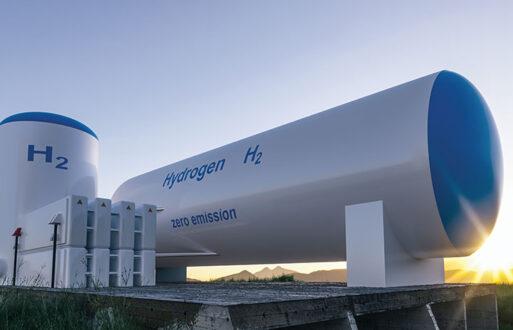PCI’s third post in our blog series, “7 Habits of Highly Effective GENCOs”, continues by discussing the operation and bidding of complex assets, their increasing utilization, and the inexorable move away from traditional baseload generation fueled by coal and nuclear power. PCI has written previously about storage optimization for batteries, as well as pumped storage hydro, and how powerful models like GenTrader can predict variables such as:
- When to charge and discharge these resources;
- When ancillary services (A/S) are most profitable under various (price and other) scenarios
In this post, we will address co-optimization of distributed energy resources (DER), demand response (DR), and multi-stage generation commitment.
BREAKING NEWS! Co-Optimization with Distributed Energy Resources is Challenging
Due to individual state renewable energy mandates, DERs like wind and solar are being rapidly developed. NextEra Energy Resources and its recently announced triple-hybrid projects with Portland General Electric and Western Farmer Electric Cooperative have garnered a lot of GENCO and broader industry attention. While a marriage of wind and solar assets with utility-scale battery storage might promise the electric power balance between demand and supply, many factors, including the intermittency and forecast uncertainty associated with DERs, create a multi-objective problem to solve. Note:
While the GENCO goal for a co-optimization strategy in DER planning should be to minimize total annual cost at the maximum fuel savings, that objective must take into account numerous factors, including:
- Satisfying reliability;
- Both state and federal (Department of Energy) renewable energy rules and requirements;
- Increasing complexity in calculating net load profiles based on:
- Fluctuating supply of renewable power
- The non-deterministic nature of load (demand)
- Commercial, weekday, and weekend load profiles
Capital costs, O&M costs, and production tax credits for wind/solar are also important inputs in strategic co-optimization and DER planning.
We constantly hear and read about digitalization and predictive analytics in the energy industry, and for good reason, as they will (in part) greatly aid in the accuracy of load profile forecasting.
Demand Response: Empowering, Flexible, Complex & “Rally Killing”
Historically, some large-scale commercial consumers of electricity would provide flexibility to reduce demand and potentially offer interruptible load reserves. Thanks to technology and the creation of load aggregators, retail consumers may also provide a similar function in exchange for more competitive rates.
The rise of intermittent renewable energy requires quick optimization decisions when the sun isn’t shining, or the wind dies away, and DR is an arrow in the quiver of GENCOs constantly trying to improve how they maximize system operations and profits when environmental conditions change.

RTO/ISO markets have started to empower consumers to provide elasticity and efficiency. Some markets are ahead of others in optimizing demand response.
Price-making consumers can impact the price of electricity by reducing consumption, and some power traders refer to demand response as the quiet “rally killer,” especially during ballistic price periods. The quiet effectiveness of consumers, through their DR behavior, is due in part to how they are modeled in the market.
Because offer curves are priced differently for different levels of demand response, a speculator would not know with enough certainty when DR can enter the market and, therefore, depress prices. The variability creates complexity that mitigates intuition and demands analytical sophistication.
Demand response is viewed as a complex asset because:
- DR considers energy bids, reserve offers, and the volatility of electricity prices.
- The offer stack must be optimized in conjunction with optimizing the demand curve.
Consumers interact in both demand response and reserve offers, and large consumers – either commercial or load aggregating – can strategically improve their returns by co-optimizing energy bids and reserve offers. The concept of Interruptible Load Reserves (ILR) provides dual optionality to extract value and allows for the submission of an optimal demand bid curve while simultaneously optimizing a reserve offer stack.
In electric power markets, as we approach capacity constraints, power prices rise sharply, a dynamic that industry analysts refer to as the “hockey stick” nature of generation stack offers. And DR recognizes price elasticity as a wonderful optimization opportunity.
Multi-Stage Generation
The growing reliance on interruptible sources of energy is increasing market regulator concerns with respect to supply reliability and stability. Unfortunately, the expression, “you don’t know what you have until you don’t have it anymore,” doesn’t really apply to the energy industry since multiple generations in the U.S. have largely known nothing but reliable power. Still, regulatory concerns will increasingly focus on the reserve component of final electricity prices.
GENCOs operate with a strategy to obtain favorable quotes for energy but also for reserves. The co-optimization goal is to maximize the joint energy and reserve prices.

Combined cycle units are complex assets that allow GENCOs to more easily deal with the uncertainty of intermittent resources and rapidly changing load profiles.
Contingent on demand and market prices, most Combined Cycle Gas Turbine (CCGT) facilities can generate power in one of several ways. A 2×1 CCGT could have multiple configurations (CT1, CT2, CT1xST, CT2xST, etc.), and the complexity of transitioning between them must be accurately mirrored in your optimization model. Major inputs include:
- Startups
- Shutdowns
- Ramping constraints
- Minimum time and production levels
- Minimum hours of steam generation
- Supplementary firing
- Natural gas contracts
- Energy and reserve pricing
CCGTs can earn revenue in day-ahead and real-time markets, in reserve markets, and via their associated regulation and ancillary services (A/S). The primary revenue-influencing costs are connected to fuel, maintenance, start-up/shutdown, and emissions.
Conclusion: Get the Best Optimization Platform Possible
When the RTO/ISO markets launched, optimization was relatively simple. The strategy was to submit your unit at the true cost, follow dispatch, and perform as promised in your DA offer. The market would reward you with favorable energy prices and low settlement charges. Unfortunately, the bygone days of “set it and forget it” no longer apply to the operation and bidding of assets, especially complex assets that make up an increasing share of GENCO portfolios.
PCI’s GenTrader optimization platform has been the industry standard since before ISO/RTO markets launched and still is, enabling power generation companies to more effectively compete (inside or outside of markets). New GenTrader battery modeling capabilities coordinate batteries with renewable and thermal solutions by applying energy-constrained components to allocate charging and discharging decisions critical to profit maximization.
The increasing market participation of energy storage resources (ESR) represents an exciting development for GENCOs that PCI experts can help them capitalize on.







